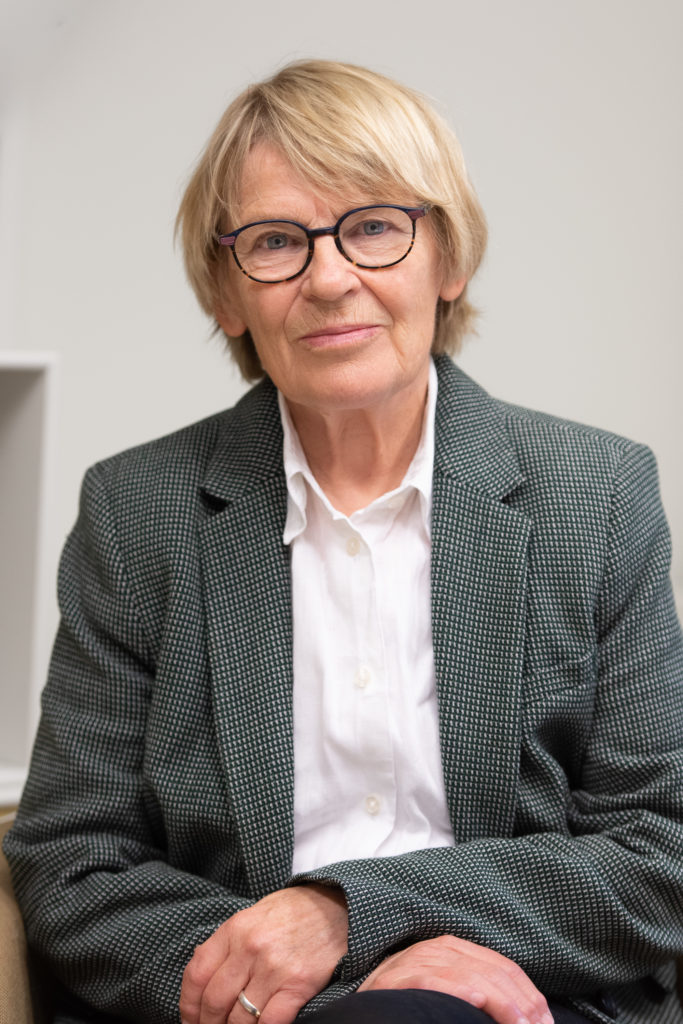
Statistics show that among children and adolescents, girls are much less likely to be diagnosed with ADHD. One expert suggests there is inbuilt “scientific bias” while another expert says that women with ADHD are at greater risk of suicide.
“I would probably have been part of the suicide statistics, but I lived for mum and dad” says Tove Lundin, who was diagnosed with ADHD at age 30
By Amanda Xiang, Athanasia Dordokidou, Heino Ollin, Peter Seenan
At 30 years old, author Tove Lundin was diagnosed with attention deficit hyperactivity disorder, better known as ADHD. It followed three years of psychosis that was triggered by a severe crash. “The combination of the stress of social life, education and everyday tasks like paying bills became too much,” she says.
“At elementary school I struggled to restrain myself and took it out at home in furious outbursts of anger,” says Lundin, a freelance journalist and advocate for women with ADHD. “Maybe I would have felt special, in a good way, if I knew then that I had ADHD. I often think that I would like to give young me a hug. It was not fun to be a girl in elementary school and be weird.”

These days Tove Lundin lectures about ADHD and gives advice to patients at psychiatric clinics. She has spent the last ten years raising awareness of ADHD and the importance of early diagnosis, especially among women.
Statistics from Sweden’s National Prescribed Drug Register suggest there may be many more women like Tove Lundin who are diagnosed with ADHD late in life or missed entirely. “I got my diagnosis when I was 30, but I’ve met people who got it when they were 70,” says Lundin.
In Sweden, significantly more males are prescribed ADHD medication than females and this is particularly evident from ages 5–19. According to the Swedish National Board of Health and Welfare, prescription rates are an accurate reflection of diagnosis rates in the country.
National data for 2021 shows that 1.9% of boys aged 5–9 were prescribed ADHD medication versus just under 0.6% of girls of the same age. While of those aged 10–14, 7% of boys received medication compared to 3% of girls.
Put another way, more than three times as many boys aged 5–9 are prescribed ADHD medication than girls of the same age. While among children aged 10–14 years 13,489 more boys than girls receive ADHD medicines in Sweden.
From 20 to 24 years old, more women are prescribed ADHD medicine than men suggesting a redressing of the imbalance seen in younger years as women are diagnosed later. While for older age groups, the gaps between males and females are not significant.
“There is scientific bias,” says Svenny Kopp, medical doctor and senior physician in child and adolescent psychiatry at Gillberg Neuropsychiatry Centre in Gothenburg. “ADHD examinations are designed for boys, so symptoms for boys are much more easily detected than in girls.”
According to Kopp, there was no research on girls before the 1990s, whereas boys have been researched from the 1960s, she says. All knowledge is based on boys and that’s one reason girls are diagnosed with ADHD later than boys.
For Tove Lundin it’s no surprise that she wasn’t diagnosed earlier: “When I got my diagnosis I noticed that the questions were designed for boys and men. I was asked if I jumped around on tables in class as a child and those types of things. Luckily, however, the young woman examining me understood that the symptoms for girls could be different and I was able to get my diagnosis anyway.”
About ADHD Attention deficit hyperactivity disorder (ADHD) is a condition that affects millions of children and often persists into adulthood. ADHD includes a group of long-standing problems such as difficulty maintaining attention, hyperactivity, and impulsive behaviour. Although there is no cure, treatment can go a long way toward managing the symptoms of ADHD. Treatment generally includes medication and behavioural interventions. Early diagnosis and treatment can have a big impact on outcomes. ADHD is believed to be more prevalent in males than females, and boys and girls may behave differently. For example, boys may be more active, while girls may tend to be quietly inattentive. Source: Mayo Clinic
While ADHD prescription rates for women are rising overall in Sweden (from 20,813 in 2011 to 73,220 in 2021) suggesting better awareness and diagnosis of ADHD at a general level, there still exists a significant gap between the sexes in childhood and adolescence. From the prescription statistics, it’s also clear that there are wild variations between regions in Sweden, with 10% of teenage boys prescribed ADHD medication in Gotlands län – almost double the rate of the national average.
Kopp says that the regional differences are down to a number of factors, but she isn’t concerned about the situation in Gotland. “Gotland has had high rates for a long time, but that’s because there has been a fantastic child and adolescent psychiatrist there.” Higher rates of diagnosis point to there being “competent and interested doctors and psychologists,” she says.
Since receiving her ADHD diagnosis, Lundin says that it has become easier to accept the way she is and develop coping strategies for life, including “being nice to myself when things go wrong.” But she’s still worried about girls and women who don’t get a diagnosis early in life, in part because she knows the risks are so great.
Lundin says the consequences of undiagnosed ADHD could have been much worse for her if it were not for her parents. “I would probably have been part of the suicide statistics, but I lived because I did not want to make mum and dad sad,” she says.
“Suicide in general is more common among girls with ADHD, as well as self-injurious behaviour,” says Svenny Kopp, who adds that women with ADHD also suffer from more anxiety and depression. Alcohol misuse and drug abuse is also significantly higher for people with ADHD, Kopp says.
Studies show that women with ADHD are also at higher risk of being abused, more at risk of unplanned pregnancy, sexually transmitted diseases and sexual victimisation.
Sweden is not alone in recording significant gaps between diagnoses of ADHD in boys and girls, suggesting under-diagnosis of girls is a more widespread problem. In Nordic neighbour Finland, one large-scale study from 2020 found that boys aged 6–12 years on ADHD medication outnumbered girls 4.5 to 1, while among 13–17-year-olds the ratio was 3.3 to 1. From research published in 2012, similar large differences in ADHD rates in children are also seen in Denmark (2.7:1), Germany (3.6:1) and the Netherlands (3:1).
Miikka Vuori, lead author of the Finnish study (which compiled data from 2008–2018), writes that while a reduction of the gap between boys and girls in recent years “may reflect increased awareness of ADHD in females” his belief is that in general ADHD may go unnoticed among females in Finland. “Although clinic-referred females display similar levels of symptoms compared with males,” he says “the female gender is, on average, related to lower ratings on core symptoms of ADHD, which reflects a general delay in recognising ADHD among females.”
For Svenny Kopp, it’s important that there’s more research carried out on girls. Compared to twenty years ago the situation is much better, she says, but there is still a huge lack of knowledge about how it is to live with ADHD.
“If we in general prioritise the existence of girls as much as boys, then the research will follow. We’re talking about this right now because the risks for girls have been highlighted, but it’s also because there are more female scientists nowadays,” she adds.

Since 2014 Tove Lundin has lived on a small farm together with her husband and three children, where they raise alpacas. “I am happy with how life turned out,” she says. “It is not always perfect, but I am coping with it. Actually, I am not sure if I would have dared to move out here if it wasn’t for my ADHD.”
Eleven additional women shared their stories with us via a survey. They communicated how challenging it has been for them to live with undiagnosed ADHD and how the diagnosis changed their lives. Even though the majority of them got diagnosed after the age of 35, they all showed symptoms before the age of nine. According to them, their gender was one of the primary reasons for their late diagnosis. Some of their experiences are shared below:
In Sweden, Mind has a suicide line open 24/7 for those who have thoughts of taking their life or have a loved one with such thoughts. “Självmordslinjen” can be contacted by phone on 90101 or by chat.
If you suspect that you or a relative has ADHD you can get support at your local health centre. If you are under 18 years old you can also contact the child and adolescent psychiatry (BUP) or a youth guidance centre (UMO).
How we got the data
The dataset is based on the National Prescribed Drug Register (Läkemedelsregistret). All data in the register comes from the Swedish eHealth Agency. Pharmacies, retailers, and wholesalers are obligated to report their sales to the Swedish eHealth Agency. Over-the-counter medicines or medicines given directly to the patient in, for example, hospitals are not included. The data was downloaded from the Swedish National Board of Health and Welfare and then filtered to compare age groups, genders and regions.
